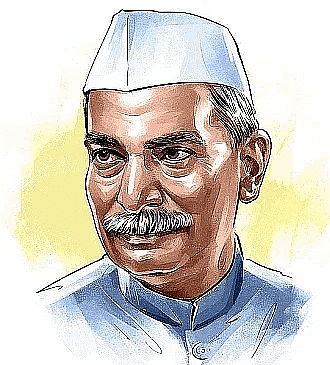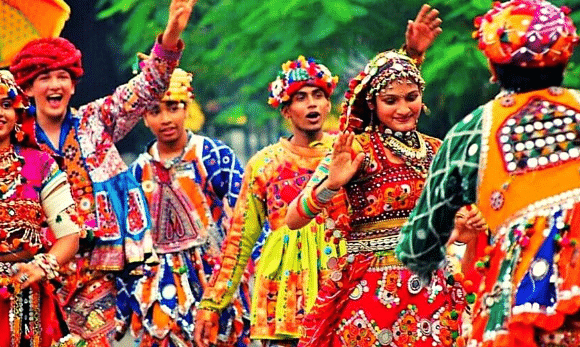History, Art & Culture: December 2023 Current Affairs | General Test Preparation for CUET UG - CUET Commerce PDF Download
ASI’s Stance on Religious Practices at Monuments

Context: The Parliament received and presented a report from a parliamentary panel titled 'Issues related to Untraceable Monuments and Preservation of Monuments in India.'
More on news
After prayers at the Martand Sun Temple ruins in May 2022, the Archaeological Survey of India, under the Ministry of Culture, expressed concern to the Anantnag district administration, deeming it a rule violation.
Martand Sun Temple
- Built by Karkota dynasty king Lalitaditya Muktapida (725 AD to 753 AD) in the eighth century.
- It was dedicated to Surya and is the first sun temple in India.
- It was destroyed by Sikandar Shah Miri in the 14th century.
- Is one of the three holiest sites of pilgrimage for Kashmiri Pandits, alongside the Sharada Peeth and the Amarnath Temple.
Key Recommendations from the Report:
- Prioritizing Conservation: The Archaeological Survey of India (ASI) should consider allowing religious activities at nationally protected monuments of religious significance, only if these activities don't negatively impact the preservation and conservation of the monuments.
- Ministry of Culture's Stance: The Ministry of Culture emphasizes that, according to policy decisions, the reintroduction of religious practices is not allowed if it was not customary at the time of the monument's protection by the ASI or has been discontinued for an extended period. Presently, ASI permits rituals and religious practices only if they were historically part of the monument's practices.
- Untraceable Monuments: The Ministry of Culture provided detailed progress reports for just 21 out of the total 35 recommendations. The ASI should conduct an expeditious survey to identify these monuments, make this information publicly available, including expenses incurred, and note the issues surrounding these sites.
Concern
The presence of deteriorating temples, dargahs, churches, and other religious sites among the protected monuments poses significant administrative and conservation challenges, akin to opening a Pandora's Box.
ASI rules for prayers are allowed at Protected sites:
- Prayers are allowed at protected sites only if they were “functioning places of worship” at the time it took charge of them. Eg: namaz is held every Friday at the Taj Mahal.
- No religious rituals can be conducted at non-living monuments (where there has been no continuity of worship when it became an ASI-protected site)
About Archaeological Survey of India (ASI)
- Nodal Ministry: Ministry of Culture.
- Functions: Maintenance of ancient monuments and archaeological sites and remains of national importance.
- Regulation: It regulates all archaeological activities in the country as per the provisions of the Ancient Monuments and Archaeological Sites and Remains Act, 1958, and Antiquities and Art Treasure Act, 1972.
UNESCO Recognition to Gujarat’s Garba Dance
Context: During the 18th meeting of the Intergovernmental Committee for the Safeguarding of the Intangible Cultural Heritage in Kasane, Botswana, held from December 5th to 9th, 2023, UNESCO included the 'Garba of Gujarat' on the Representative List of Intangible Cultural Heritage of Humanity.
Details
- UNESCO Recognition: 'Garba of Gujarat' becomes the 15th ICH element from India to join the UNESCO list, signifying its cultural significance and role in fostering social inclusivity.
- UNESCO Acknowledgment: The Evaluation Body of the 2003 Convention praised India's dossier for 'Garba of Gujarat' with outstanding supporting material, recognizing its ability to promote unity in diversity and social equality among communities.
- UNESCO's Listing Mechanism: The UNESCO 2003 Convention aims to enhance visibility, create awareness about the significance of intangible cultural heritage, and promote dialogue that respects cultural diversity.
- India's Role: India, elected to be part of the 24 Member Inter-governmental Committee (IGC) of the ICH 2003 Convention in 2022, played a role in nominating and supporting 'Garba of Gujarat' for inscription.
About Garba
Garba's Etymology and Symbolism:
- Origin: The term "Garba" originates from the Sanskrit word for "womb," signifying fertility, life, and gestation.
- Garbha Deep: A clay lantern illuminated from within, symbolizing the womb, life, and embryo. Dancers venerate the feminine divine, especially Goddess Durga, by encircling this lantern.
- Symbolism in Dance: Garba unfolds in circular patterns, denoting the cyclical essence of time in Hinduism. It embodies the continual cycle of birth, existence, death, and rebirth, with the motionless representation of the Goddess amidst this perpetual motion.
- Historical Roots: Originating from Gujarat's folk customs, Garba has ancient roots as a ceremonial dance devoted to the goddess Durga or Amba.
Dance Style and Costume:
- Circular Dance: Dancers perform in concentric circles, exhibiting synchronized and elegant movements.
- Costumes: Women adorn vibrant chaniya choli, adorned blouses coupled with flared skirts, complemented by accessories like jhumkas, necklaces, and bangles. Men traditionally don kediyu, a short round kurta worn above the knees, and a pagadi on their heads.
Evolution and Modern Influence:
- Dandiya Raas Influence: Garba has been influenced by Dandiya Raas, a traditional male dance, amalgamating into the high-energy style seen today.
- Global Presence: Garba's popularity has transcended borders, particularly among the Gujarati diaspora. Celebrations occur worldwide, notably in the United States, Canada, and the United Kingdom.
Garba's Characteristics:
- Music and Rhythm: Garba is accompanied by vibrant and rhythmic music, often incorporating traditional instruments like dhol, tabla, and dandiya sticks.
- Attire: Dancers typically don colorful traditional attire such as chaniya choli for women and kediyu for men, featuring intricate embroidery and mirror work.
- Circular Dance: Participants form concentric circles or formations, executing graceful and synchronized circular dance patterns.
Navaratri Festivities and Garba:
- Nine-Day Celebration: Navaratri is marked by extensive celebrations, where communities engage in nightly Garba performances for nine consecutive days.
- Traditional Customs: The dance is an integral part of various Navaratri rituals, symbolizing the victory of good over evil and the reverence for feminine divinity.
About ICH
Definition and Characteristics:
- UNESCO Recognition: UNESCO defines Intangible Cultural Heritage as practices, expressions, representations, knowledge, and skills acknowledged by communities, groups, and sometimes individuals as part of their cultural heritage.
- Living Cultural Heritage: It is often termed as living cultural heritage and is manifested in domains such as oral traditions, performing arts, social practices, rituals, traditional craftsmanship, and knowledge about nature and the universe.
Categories of Intangible Cultural Heritage:
- Oral Traditions and Expressions: Language and oral traditions as vehicles of intangible cultural heritage.
- Performing Arts: Various performing arts forms and traditions worldwide.
- Social Practices, Rituals, Festive Events: Cultural practices associated with social events and celebrations.
- Nature and Universe Knowledge: Traditional knowledge about nature, biodiversity, and the universe.
- Traditional Craftsmanship: Skills and practices in traditional crafts and craftsmanship.
Preservation and Protection:
- UNESCO Convention: The Convention for the Safeguarding of the Intangible Cultural Heritage was drafted in 2003 for the protection and promotion of ICH.
- Legislative Measures: Several countries have introduced legislation to safeguard intangible cultural heritage, such as Japan's law for the protection of cultural properties.
Cultural Elements as ICH:
- Food Heritage: Culinary traditions like the Mediterranean diet, traditional Mexican cuisine, and Japanese washoku are recognized as intangible cultural heritage.
- Dance Heritage: Various dance genres worldwide, from celebratory and ritual dances to social dances, are included in the UNESCO lists of intangible cultural heritage.
Challenges and Debates:
- Intellectual Property Rights: Debate surrounds the protection of intangible cultural heritage through intellectual property rights, addressing issues of commodification and legal frameworks.
- Sustainability and Preservation: Efforts are ongoing to sustainably preserve and promote these cultural elements while respecting community practices and identities.
Overview of the 14 traditions and rituals from India included on the 'Intangible Cultural Heritage of India' list:
- Ramlila (2008): Traditional performance of the Ramayana during the Autumn festival of Dussehra, recounting episodes from the epic through dialogue, narration, recital, and song.
- Tradition of Vedic chanting (2008): Recitation of Sanskrit Vedas, symbolizing ancient cultural traditions and the foundation of Hinduism, practiced with specific tonal accents and pronunciation.
- Kutiyattam, Sanskrit theatre (2008): A 2,000-year-old theatrical tradition from Kerala, combining Sanskrit classicism with local elements, featuring extensive training for performers.
- Ramman, religious festival and ritual theatre of the Garhwal Himalayas (2009): Celebrating the guardian god Bhumiyal Devta through music, theatre, and historical reconstructions in the villages of Saloor-Dungra, Uttarakhand.
- Mudiyettu, ritual theatre and dance drama of Kerala (2010): An annual ritual dance drama performed in Kerala villages based on the battle between the goddess Kali and the demon Darika.
- Kalbelia folk songs and dances of Rajasthan (2010): Expressive dances by the Kalbelia tribe from the Thar Desert, symbolizing their traditional way of life and adapting to socio-economic changes.
- Chhau dance (2010): Traditional dance form from eastern India, enacting local folklore, epics, and featuring distinct styles from different regions.
- Buddhist chanting of Ladakh (2012): Recitation of sacred Buddhist texts in the Ladakh region, representing different sects and forms of Buddhism.
- Sankirtana, ritual singing, drumming, and dancing of Manipur (2013): Art forms celebrating religious occasions and life stages of the Vaishnava people, promoting community bonding.
- Traditional brass and copper craft of utensil making among the Thatheras of Jandiala Guru, Punjab (2014): Skilled craftsmen practicing traditional brass and copper utensil-making techniques, defining their livelihood and community status.
- Yoga (2016): An ancient practice involving postures, meditation, controlled breathing, and chanting for holistic well-being, influencing Indian society's health, education, and arts.
- Traditions of Nawruz (Parsi New Year) (2016): Celebrations marking the Parsi New Year with rituals, ceremonies, and cultural events symbolizing brightness, purity, and livelihood.
- Kumbh Mela, North India (2017): The world's largest spiritual congregation held every four years, where devotees bathe in holy rivers to absolve sins and gain spiritual freedom.
- Durga Puja, Kolkata (2021): Annual festival in honor of the Hindu goddess Durga, celebrated with sculpting figurines, rituals, and immersion of the goddess in rivers.
Conclusion
In summary, the recognition of 'Garba of Gujarat' on UNESCO's Representative List of Intangible Cultural Heritage highlights its cultural richness, societal importance, and its capacity to unify communities, showcasing India's vibrant heritage on an international platform.
Dr. Rajendra Prasad

Context: The President of India recently commemorated the birth anniversary of Dr. Rajendra Prasad, the inaugural President of India, by paying tribute.
Who Was Dr. Rajendra Prasad?
- Dr. Rajendra Prasad, born on December 3, 1884, in Zeradei, Siwan, Bihar, was an influential figure in India's freedom movement. He collaborated with Mahatma Gandhi during the Champaran Satyagraha in 1917 and strongly opposed the Rowlatt Act of 1918 and the Jallianwala Bagh massacre in 1919. He actively participated in Gandhi's non-cooperation movement and led the Salt Satyagraha in Bihar in 1930, resulting in his imprisonment.
- In 1911, Dr. Prasad officially joined the Indian National Congress during its Calcutta session. His contributions expanded as he became the Minister of Food and Agriculture in the Interim Government of 1946, advocating the slogan "Grow More Food."
- On January 26, 1950, he was elected as India's first President when the nation adopted its constitution. He held this esteemed position until May 13, 1962, marking the longest tenure as President in India's history. Dr. Prasad received the Bharat Ratna in 1962 for his significant contributions. He authored notable books like "Satyagraha at Champaran," "India Divided," and his autobiography "Atmakatha." Dr. Rajendra Prasad passed away on February 28, 1963.
|
164 videos|800 docs|1155 tests
|






















